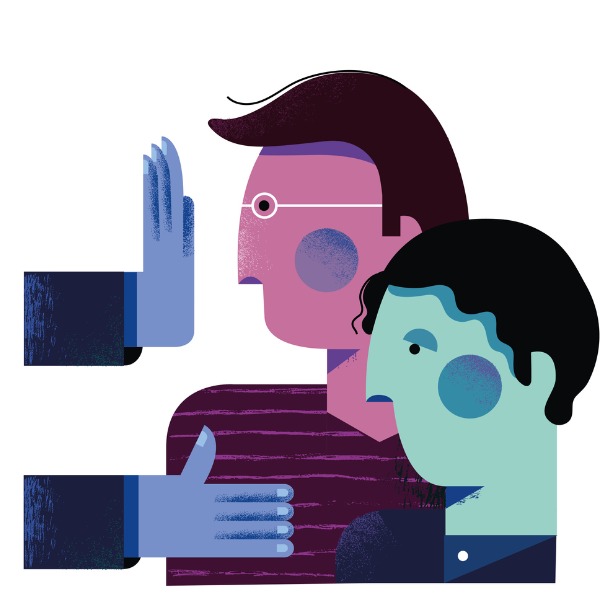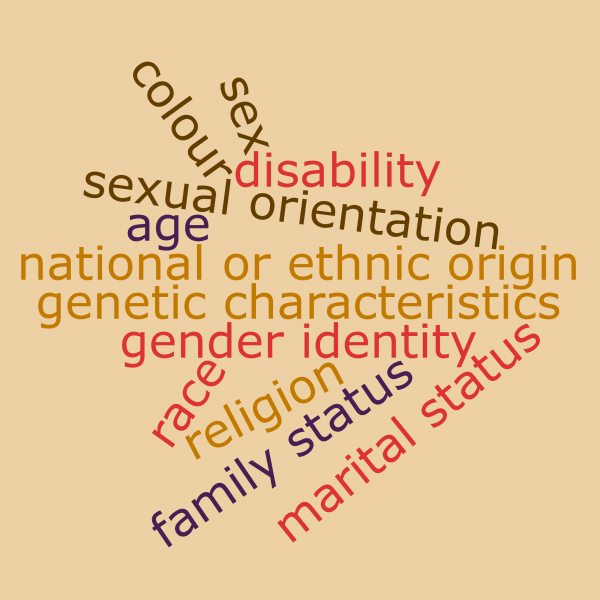Discrimination in the Workplace

One person accepted and another rejected (Johanna Svennberg, iStockphoto)

One person accepted and another rejected (Johanna Svennberg, iStockphoto)
How does this align with my curriculum?
Curriculum Alignment
AB
8
Career and Technology Foundations (CTF) (revised 2019)
CTF is working independently and with others while exploring careers and technology.
AB
9
Career and Technology Foundations (CTF) (revised 2019)
CTF is working independently and with others while exploring careers and technology.
AB
8
Career and Technology Foundations (CTF) (revised 2019)
CTF is exploring interests, passions and skills while making personal connections to career
possibilities.
AB
9
Career and Technology Foundations (CTF) (revised 2019)
CTF is exploring interests, passions and skills while making personal connections to career
possibilities.
MB
12
Grade 12 Career Development: Life/Work Transitioning (2017)
Unit 4: Job Seeking and Job Maintenance
MB
9
Grade 9 Career Development: Life/Work Exploration (2017)
Unit 5: Career and Community Experiences
MB
10
Grade 10 Career Development: Life/Work Planning (2017)
Unit 4: Job Seeking and Job Maintenance
MB
10
Grade 10 Career Development: Life/Work Planning (2017)
Unit 5: Career and Community Experiences
MB
11
Grade 11 Career Development: Life/Work Building (2017)
Unit 4: Job Seeking and Job Maintenance
MB
11
Grade 11 Career Development: Life/Work Building (2017)
Unit 5: Career and Community Experiences
MB
12
Grade 12 Career Development: Life/Work Transitioning (2017)
Unit 5: Career and Community Experiences
ON
10
Career Studies Grade 10, OPEN (GLC2O) (2019)
Strand B. Exploring and Preparing for the World of Work
ON
11
Communications Technology, Grade 11 University/College Preparation (TGJ3M) (2009)
Strand D: Professional Practices and Career Opportunities
ON
12
Communications Technology, Grade 12 (TGJ4M) (2009)
Strand D: Professional Practices and Career Opportunities
ON
11
Computer Engineering Technology, Grade 11, University/College Preparation (TEJ3M) (2009)
Strand D: Professional Practices and Career Opportunities
ON
12
Computer Engineering Technology, Grade 12, University/College Preparation (TEJ4M) (2009)
Strand D: Professional Practices and Career Opportunities
ON
11
Transportation Technology, Grade 11, College Preparation (TTJ3C) (2009)
Strand D: Professional Practices and Career Opportunities
ON
12
Transportation Technology, Grade 12, College Preparation (TTJ4C) (2009)
Strand D: Professional Practices and Career Opportunities
ON
11
Manufacturing Engineering Technology, Grade 11, University/College Preparation (TMJ3M) (2009)
Strand D: Professional Practices and Career Opportunities
ON
12
Manufacturing Engineering Technology, Grade 12, University/College Preparation (TMJ4M) (2009)
Strand D: Professional Practices and Career Opportunities
ON
11
Hospitality and Tourism, Grade 11, College Preparation (TFJ3C)(2009)
Strand D: Professional Practices and Career Opportunities
ON
12
Hospitality and Tourism, Grade 12, College Preparation (TFJ4C) (2009)
Strand D: Professional Practices and Career Opportunities
ON
11
Health Care, Grade 11, University/College Preparation (TPJ3M) (2009)
Strand D: Professional Practices and Career Opportunities
ON
12
Health Care, Grade 12, University/College Preparation (TPJ4M) (2009)
Strand D: Professional Practices and Career Opportunities
ON
11
Hairstyling and Aesthetics, Grade 11, Workplace Preparation (TXJ3E) (2009)
Strand D: Professional Practices and Career Opportunities
ON
12
Hairstyling and Aesthetics, Grade 12, Workplace Preparation (TXJ4E) (2009)
Strand D: Professional Practices and Career Opportunities
ON
11
Green Industries, Grade 11, University/College Preparation (THJ3M) (2009)
Strand D: Professional Practices and Career Opportunities
ON
12
Green Industries, Grade 12, University/College Preparation (THJ4M) (2009)
Strand D: Professional Practices and Career Opportunities
ON
9
Exploring Technologies, Grade 9, Open (TIJ1O) (2009)
Strand D: Professional Practices and Career Opportunities

